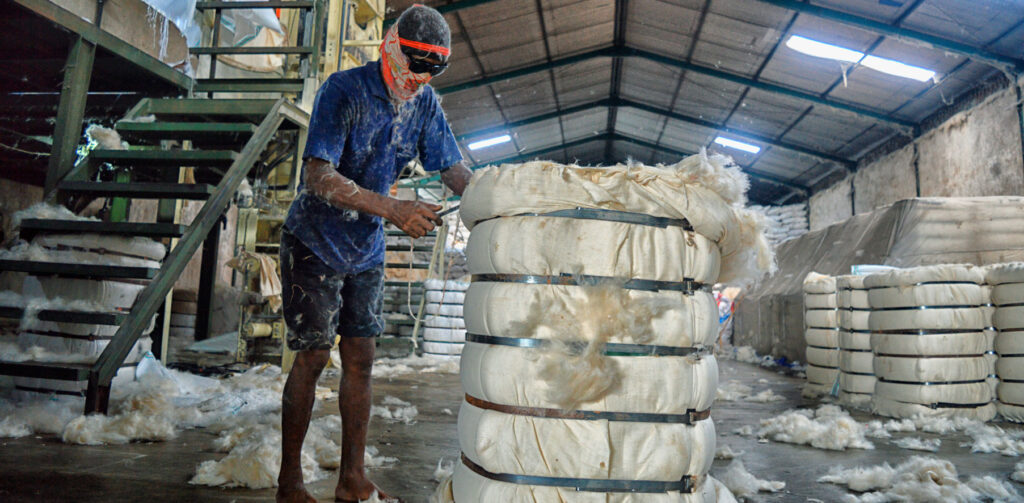Kapok: The Forgotten Fiber Making a Sustainable Comeback
Kapok, often overlooked in the textile world, is now making waves as a sustainable alternative to synthetic materials. This silky-soft, natural fiber, harvested from the pods of the towering kapok tree (Ceiba pentandra), has a rich history and untapped potential. Once a staple in various industries, kapok is being rediscovered for its eco-friendly properties, offering a unique solution to the growing demand for sustainable materials.
The Roots of Kapok: A Natural Marvel
The kapok tree is native to the tropical rainforests of Southeast Asia, Central America, and West Africa. These massive trees, often reaching heights of 60 to 70 meters, have been an integral part of their ecosystems for centuries. Their distinctive cotton-like fiber, which surrounds the seeds inside the pods, has been used for practical purposes long before modern industries took notice.
In ancient times, indigenous peoples harvested kapok for its lightweight and buoyant properties, using it to fill pillows, mattresses, and even early flotation devices. Known for its ability to repel water, kapok was a lifesaver for seafaring communities and early fishermen who needed natural materials to stay afloat.
Kapok’s Golden Age: A Key Industrial Resource
Kapok’s commercial value skyrocketed during the late 19th and early 20th centuries, particularly when global industries were on the hunt for versatile, reliable materials. Its exceptional buoyancy made it a top choice for life jackets and flotation devices during World War I and World War II. At the time, there was no other natural fiber quite like kapok.
In the early 1900s, major kapok-producing nations, including Indonesia, Thailand, and the Philippines, thrived as global demand surged. The fiber was widely used in textiles, furniture, and bedding industries, as well as in the manufacturing of life-saving gear for the military. For several decades, kapok was regarded as one of the most valuable plant-based fibers in the world.
The Decline: Kapok vs. Synthetic Fibers
By the mid-20th century, kapok’s popularity began to fade as synthetic materials like polyester and foam took over the market. These new materials were cheaper, easier to mass-produce, and could be tailored for a wider variety of applications. As a result, kapok plantations dwindled, and the once-booming kapok trade fell into obscurity.
For years, kapok remained a forgotten fiber, largely replaced by man-made alternatives that dominated the bedding, furniture, and textile industries. It wasn’t until recently that the world started re-examining the environmental impact of synthetic materials, leading to a resurgence of interest in kapok.

The Comeback: Kapok as an Eco-Friendly Fiber
As the world faces an environmental crisis, the spotlight is turning back to natural, renewable resources like kapok. The fiber is being embraced once again for its environmentally sustainable qualities. Unlike synthetic fibers, which are petroleum-based and contribute to pollution, kapok is 100% biodegradable and compostable.
Harvesting kapok doesn’t harm the trees; instead, the fiber is collected from the fallen seed pods, making it a highly sustainable process. The kapok tree itself is a natural protector of rainforests, providing habitats for diverse wildlife and preventing deforestation by offering an economic alternative to logging.
Kapok’s Eco-Friendly Superpowers
What sets kapok apart from other natural fibers is its impressive range of eco-friendly properties. Kapok is:
- Lightweight: It is one of the lightest natural fibers in the world, making it ideal for products where weight matters, like life vests and pillows.
- Water-Resistant: Kapok naturally repels water, which makes it perfect for filling items like cushions or flotation devices, maintaining buoyancy even in wet conditions.
- Hypoallergenic: Kapok is naturally resistant to dust mites and molds, making it a healthy choice for bedding, especially for those with allergies.
- Chemical-Free: Kapok is grown without the use of pesticides or fertilizers, ensuring a cleaner, greener production process compared to heavily treated synthetic fibers.
Kapok in the Modern World: A Sustainable Trendsetter
Kapok is not just a relic of the past; it’s now at the forefront of the modern sustainability movement. Designers, environmentalists, and eco-conscious consumers are rediscovering this forgotten fiber and its potential to revolutionize various industries.
In the bedding and furniture markets, kapok is making a significant comeback as an alternative to synthetic fills like foam and polyester. Companies are producing eco-friendly pillows, cushions, and mattresses filled with kapok, offering comfort, breathability, and a lighter environmental footprint. Because kapok is naturally hypoallergenic and biodegradable, it provides a healthier and more sustainable option for consumers seeking green alternatives.
Fashion is also embracing kapok, with sustainable clothing brands experimenting with its soft texture and insulation properties. As the demand for eco-friendly fashion grows, kapok is finding its place as a premium, natural material that combines luxury with environmental consciousness.
The Future of Kapok: A Fiber for Tomorrow
Kapok’s story is one of rediscovery. Once overshadowed by cheaper, synthetic alternatives, it is now returning as a beacon of sustainable innovation. As more industries shift toward eco-friendly practices, kapok offers a compelling solution: a biodegradable, renewable, and incredibly versatile material that doesn’t compromise on quality.
In a world where consumers are demanding greener options, kapok is poised to shine. With its rich history, remarkable properties, and sustainable harvesting methods, this forgotten fiber is proving to be the material of the future—blending ancient tradition with modern sustainability.
Contact us :
📞 : 6285933133244
📍 : Jl. Ir Soekarno, No.122, Dadaprejo, Junrejo, Kota Batu 65323


1 thought on “Kapok: The Forgotten Fiber Making a Sustainable Comeback”